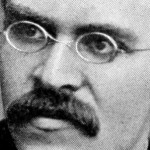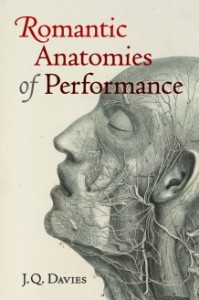by Ian Cornelius
The essay begins:
In June of 1381 the English government briefly lost control of significant portions of the realm. Sometimes called the Peasants’ Revolt, this concatenation of local insurrections was the largest rebellion of unenfranchised people in medieval England. It began as a tax rebellion: the first violent incident was against a royal commission investigating tax evasion in Essex and seeking to raise missing sums. In the following days, coalitions of peasants, laborers, and artisans in towns and villages across southeastern England organized themselves into a new authority directly opposed to the authority of the landlords and royal government. Properties belonging to the king’s hated councilors were destroyed; legal documents were seized from landlords and county officers, carried to town squares, and publicly burned; prisons were broken open and prisoners released. Many of the insurgents’ victims were directly involved in tax collection; others were well known as prominent officials of the county government. As news of the insurrection spread to neighboring counties, so too did insurrection itself. Meanwhile, detachments from Kent and Essex converged on London, where they hoped to present their grievances to the young king. When Richard retreated into the Tower and declined to hear the accusations against his councilors, the rebels struck out on their own. On June 14, at Tower Hill, the king’s chancellor and his treasurer were summarily executed as traitors to the realm. The murder of these two men belonged to the same series as the first events of the rising: the chancellor had presented the government’s enormous subsidy request at the Northampton Parliament the previous November; the treasurer had presided over collection of the tax. However, motives and grievances had now generalized well beyond matters of taxation. The demands that the rebels made to the bunkered king in London included regularization of terms of land tenure throughout the realm, removal of protective restrictions on the sale of agricultural produce, removal of the statutory prohibitions against free negotiation of wages, and abolition of serfdom.
The insurrection was broken almost as quickly as it arose, though with greater loss of life. Soon afterwards, the London poet John Gower wrote a new poem. A lawyer and rentier, Gower was distinguished from the principal targets of the rebels’ violence by his physical remove from the peasants whose surplus he extracted, and by his apparent abstention from government service. In 1381, Gower may already have been living in the Augustine priory of St. Mary Overie, situated at the southern end of London Bridge, over which the Kentish rebels crossed into the city on June 13. Gower’s poem on these events is named Visio Anglie in recent scholarship. It joins the Anonimalle Chronicle, the Westminster Chronicle, and the chronicle histories of Thomas Walsingham, Henry Knighton, and Jean Froissart as the most substantial literary treatments of the largest popular rebellion in premodern England. Visio Anglie is distinguished from these chronicles, however, by Gower’s unbridled fictive imagination, beside which the inventions of Walsingham and Froissart appear tame. In a different way, the fictive imagination of this poem distinguishes it from Gower’s own previous compositions. The poem on the rising is a vertiginous dream vision in Latin elegiac couplets. At the beginning, the Gower persona imagines he has taken a stroll into the fields to collect flowers on a pleasant summer day. He reaches the green space of aristocratic pleasure, only to find that “diverse hostile types of ordinary people were loitering in the fields in innumerable bands” (Diuersas plebis sortes vulgaris iniquas / Innumeris turmis ire per arua vagas). The dreamer is dazzled by fear and contempt. God’s curse falls upon the ordinary people and transforms them into animals. A second divine intervention causes each of the animals to abandon its own nature and take on the most homicidal qualities of wild, mythical, and scriptural beasts. They viciously presume to the status of noble animals, that is, of animals cultivated by nobility. They become fire-breathing, God-denying, property-thieving monsters. The rebel-animal-monsters unite under the leadership of a garrulous jay (the rebel leader Wat Tyler in Gower’s roman à clef) and storm the walls of Troy (that is, London). The great city is betrayed; chaos and devastation ensue. The defeated aristocrats entrust themselves to a ship representing the Tower of London. It floats out to sea, now pursued by the rebellion in the form of an ocean gale. Against that final incarnation of rebellion all defenses are futile, excepting only prayer.
 As even this brief sketch demonstrates, Visio Anglie delivers an intoxicating blend of topicality and fictionality. Modern understanding of the poem has been advanced by a distinguished series of studies bearing on three interrelated compositional features. First, Gower’s depiction of rebels as deranged beasts has received astute commentary, clarifying the ideological work performed in that representational choice. The poet lingers over the braying, mooing, grunting, barking, howling, and screeching of the assembled rebel-animals (Visio, 799–830); he renders their political intentions utterly incoherent. A second node of scholarship, subtly qualifying the first, has attended to Gower’s borrowings from earlier Latin poetry. Gower routinely derived metrical phrases and whole lines from earlier poetry, especially Ovid. The poem is a dense texture of borrowed and repurposed language. Once scorned as “school-boy plagiarism,” these procedures are now understood to activate alternate and expanded contexts for the poem’s reported action. The metamorphosis of persons into beasts remains a judgment about the character of the rebels; but attendant allusions to Ovid’s Metamorphoses (inter alia) displace the whole represented action into a literary domain. The storehouse of Latin poetry accordingly attains an unlikely importance: it figures in Gower’s poem as the mental equipment necessary for a proper understanding of contemporary events. The result is that the insurgents are again denied any possibility of self-understanding: for them, meaning is simply foreclosed. More significantly, Gower’s citational procedures would seem to place limiting conditions on even the most qualified readers. The meaning of the rising will emerge only through and within an exercise in literary interpretation. Any such exercise would presumably need to account for the poem’s violent transgressions of literary decorum as well, and this brings us to the third major line of inquiry in recent scholarship. Thomme, Symme, Bette, and Iakke do not belong in a Latin poem in classical measures; their appearance in this one (Visio, 783–92) expresses, at the level of prosody, the offense committed by English laborers who forced their way into the homes and into the thoughts of their social superiors in June of 1381. The poem’s mash-up of earlier Latin poetry; its surrealistic shifts in character, setting, and generic mode; its extravagant mélange of Christian and pagan allusion; and even the first-person speaker’s bathetic indignity may all be read along similar lines: rarefied literary language resorts to self-harm at the limits of representation. Continue reading …
As even this brief sketch demonstrates, Visio Anglie delivers an intoxicating blend of topicality and fictionality. Modern understanding of the poem has been advanced by a distinguished series of studies bearing on three interrelated compositional features. First, Gower’s depiction of rebels as deranged beasts has received astute commentary, clarifying the ideological work performed in that representational choice. The poet lingers over the braying, mooing, grunting, barking, howling, and screeching of the assembled rebel-animals (Visio, 799–830); he renders their political intentions utterly incoherent. A second node of scholarship, subtly qualifying the first, has attended to Gower’s borrowings from earlier Latin poetry. Gower routinely derived metrical phrases and whole lines from earlier poetry, especially Ovid. The poem is a dense texture of borrowed and repurposed language. Once scorned as “school-boy plagiarism,” these procedures are now understood to activate alternate and expanded contexts for the poem’s reported action. The metamorphosis of persons into beasts remains a judgment about the character of the rebels; but attendant allusions to Ovid’s Metamorphoses (inter alia) displace the whole represented action into a literary domain. The storehouse of Latin poetry accordingly attains an unlikely importance: it figures in Gower’s poem as the mental equipment necessary for a proper understanding of contemporary events. The result is that the insurgents are again denied any possibility of self-understanding: for them, meaning is simply foreclosed. More significantly, Gower’s citational procedures would seem to place limiting conditions on even the most qualified readers. The meaning of the rising will emerge only through and within an exercise in literary interpretation. Any such exercise would presumably need to account for the poem’s violent transgressions of literary decorum as well, and this brings us to the third major line of inquiry in recent scholarship. Thomme, Symme, Bette, and Iakke do not belong in a Latin poem in classical measures; their appearance in this one (Visio, 783–92) expresses, at the level of prosody, the offense committed by English laborers who forced their way into the homes and into the thoughts of their social superiors in June of 1381. The poem’s mash-up of earlier Latin poetry; its surrealistic shifts in character, setting, and generic mode; its extravagant mélange of Christian and pagan allusion; and even the first-person speaker’s bathetic indignity may all be read along similar lines: rarefied literary language resorts to self-harm at the limits of representation. Continue reading …
This essay examines the moral and political thought of John Gower’s poem on the English Rising of 1381, situating it within three contrastive fields: Gower’s moral project, his Virgilian intertext, and the practices of moral community employed by the rebels of 1381.
IAN CORNELIUS is Assistant Professor of English at Yale University. His work is focused on the literature and culture of late medieval England.





